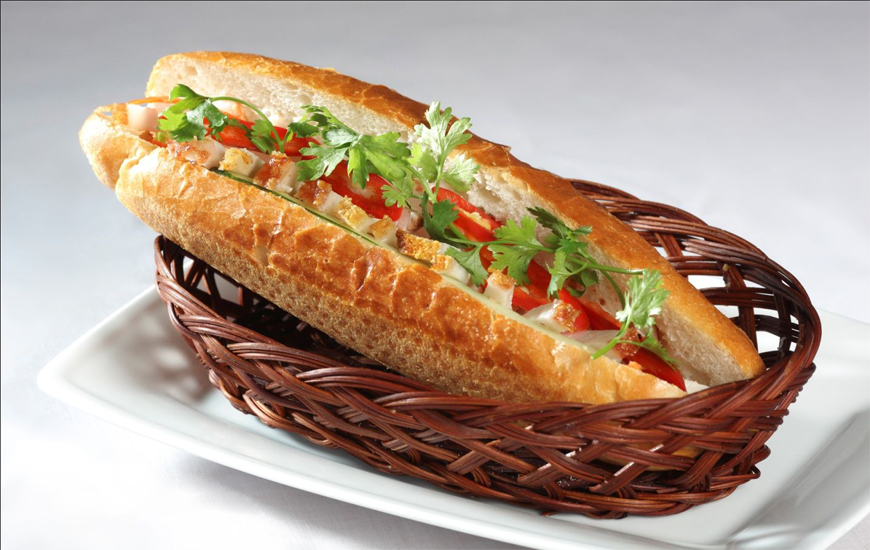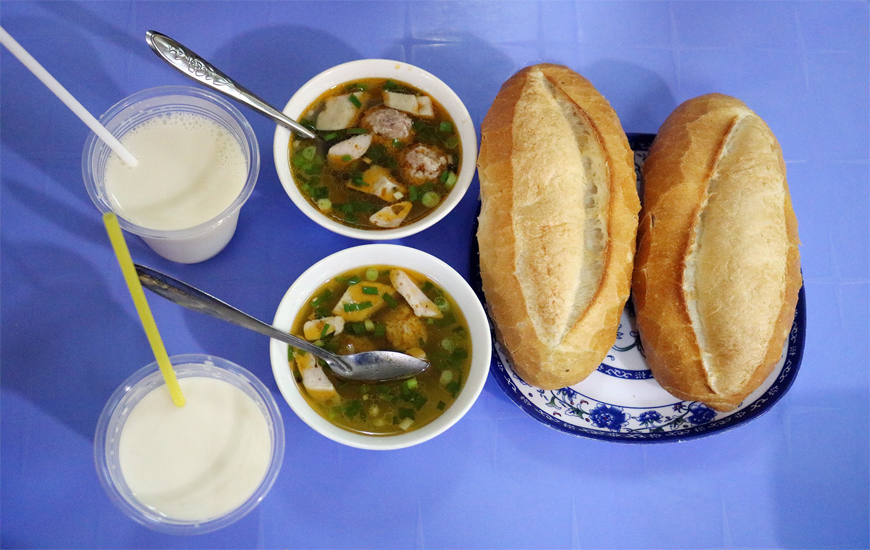By Mai Tran, Mar 17, 2025
If you are planning a trip to Vietnam, you probably have seen many articles complimenting one of the most ubiquitous Vietnamese foods – Banh Mi. However, some of you may think Banh Mi has nothing special as it’s just a French baguette filled with some meat and vegetables.
Therefore, to convince you to try at least one Banh Mi when visiting Vietnam, Incredible Asia Journeys will present a guide to the Best Banh Mi in Vietnam for you which indicates the origin of Banh Mi, its ingredients, the differences between Banh Mi in different regions of Vietnam as long as places to have the best Banh Mi.

Banh Mi has become one of the most common foods in Vietnam
Banh Mi - originally called baguette - was first introduced to the Vietnamese in the 1860s by the French colonists. It was once a luxury staple food for the locals because of the expensive imported ingredients (wheat) during that time. Later, the local bakers started to incorporate cheap local rice flour into the recipe, this method lowered the price of Banh Mi and made Banh Mi popular for the ordinary people in Vietnam.
Little by little, Banh Mi has become one of the most common foods in Vietnam that can be consumed at any time of the day and is sold in every corner of the country. Nowadays, to get a Banh Mi, you will need to pay only 15,000-40,000vnd, thus, this is one of the top choices for any local people as well as tourists when visiting Vietnam.
When introduced in Vietnam, the French baguette was modified into a Vietnamese Banh Mi version with an airy crumb and thinner crust thanks to its dough which is a mix between wheat flour and rice flour.
The fillings of Banh Mi in Vietnam are diverse in different regions of the country. Some ingredients that are commonly used are meat (either pork, chicken, or beef), Vietnamese sausage, Vietnamese coriander, cucumber, carrot, chilly, and some condiments such as chilly, mayonnaise, soy sauce, etc.
With the local’s creativity, each region invents different variations of Banh Mi which is suitable for them. Therefore, no matter how long you have stayed in Vietnam, you will always find a new type of Banh Mi.
Banh Mi in Ho Chi Minh City is very famous for the traditional meat Banh Mi which is stuffed with pate, butter, jambon, Vietnamese pork sausage, vegetables, and cilantro. This Banh Mi is attractive to the locals thanks to its localized ingredients which are their appetite. The fat meat is balanced by the pickled vegetables making people want to eat more and more.
Besides the traditional Banh Mi, people in Ho Chi Minh City also invented some variations, especially Banh Mi filled with pork skin. It is the perfect combination of fish sauce, and boiled pork skin mixed with roasted rice flour, garlic, etc.
In addition, this dish is also different depending on the sausage paired with it, thus, each baker created their recipe to attract customers. With a diverse culture, bakers in Ho Chi Minh City created a myriad of Banh Mi variations that meet the demands of different customers.

Huynh Hoa Bread - One of the most famous Banh Mi sellers in Ho Chi Minh City
Best places to have Banh Mi in Ho Chi Minh City:
• Banh Mi Huynh Hoa
- Address: 26 Le Thi Rieng, Ben Thanh, 1, Ho Chi Minh, Vietnam
- Price: 60,000 VND
• Banh Mi Hong Hoa
- Address: 62 Nguyen Van Trang
- Price: 22,000 - 38,000 VND
See more of our travel guide in Ho Chi Minh City:
Da Lat is well-known for the Banh Mi Xiu Mai. This Banh Mi is served with a bowl of pork bone broth which is added to some meatballs (Xiu Mai), Vietnamese sausage, pork skin, etc. Then, you tear a piece of Banh Mi and dip it into the rich broth. The combination of richness and spice of pepper makes this Banh Mi become a great option for a cold winter day.

Banh Mi Xiu Mai in Da Lat
Best places to have Banh Mi in Da Lat:
• Miss Hong Banh Mi
- Address: 10 Yersin, Da Lat
- Price: 10.000 - 15.000 VND
• Miss Suong Banh Mi Xiu Mai
- Address: 14 Anh Sang, Ward 1, Da Lat
- Price: 10.000 - 15.000 VND
Read more articles about the Da Lat travel guide:
Banh Mi in Nha Trang is also far different from that of other places. In Nha Trang, you will notice that people don’t use any butter to bake the baguette, the skin is also crustier, and the filling of Nha Trang’s Banh Mi is airier than that of Ho Chi Minh City Because it has no butter, thus, when eating it, we will get less-heavy-felling stomach stem from its richness.
Among different options of Banh Mi in this coastal city, Banh Mi with fried fish patty is the most delicious and famous which is so much tastier thanks to the garlic chili sauce.

Banh Mi Nguyen Huong in Nha Trang
Best place to have Banh Mi in Nha Trang:
• Banh Mi Nguyen Huong
- Address: Tan Lap, Nha Trang City, Khanh Hoa
- Price: 12.000 – 20.000 VND
In this ancient port town, the most reputable place for both the locals and foreign tourists to try Banh Mi is Banh Mi Phuong. Its special secret comes from the crust which is crustier and harder than Banh Mi in Hanoi or Ho Chi Minh City. In addition, this shop also invented 3 distinctive sauces to eat with Banh Mi, not to mention the perfect combination of Vietnamese herbs. Putting all together, there comes the most delicious staple food that you ever try.

Banh Mi Phuong in Hoi An Ancient Town
Best place to have Banh Mi in Hoi An:
• Banh Mi Phuong
- Address: 2b Phan Chu Trinh, Cam Chau, Hoi An, Quang Nam
- Price: 20,000 – 35,000 VND
Read more articles about Hoi An travel guide:
The weather in Hanoi is separated into 4 distinct seasons which have their features. Thus, Hanoi people also created different types of Banh Mi for different periods of the year. Among them, one of the most interesting dishes is Banh Mi Ap Chao which is a variation of European beef stake. This dish consists of a baguette served with pate, omelet, beef steak, etc. put in a small hot pan.

A Banh Mi vendor in Hanoi street
Best places to have Banh Mi in Hanoi:
• Banh Mi 25
- Address: 25 Hang Ca, Hoan Kiem, Hanoi
- Price: 35,000 - 40,000 VND
• Duc Long Bread
- Address: Luong Ngoc Quyen, Hang Buom, Hoan Kiem, Hanoi
- Price: 40.000 VND - 50.000 VND
Read more articles about the Hanoi travel guide: